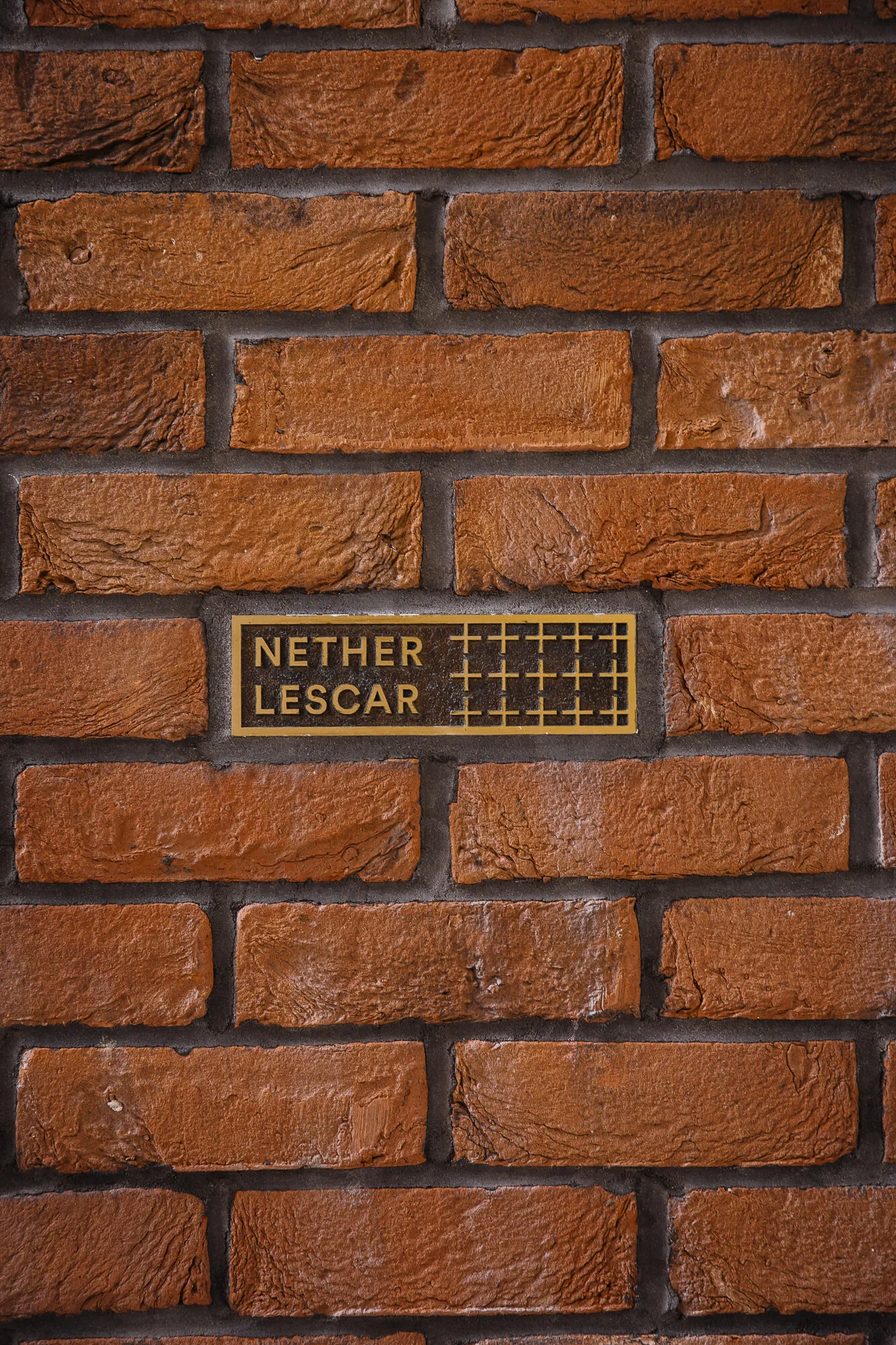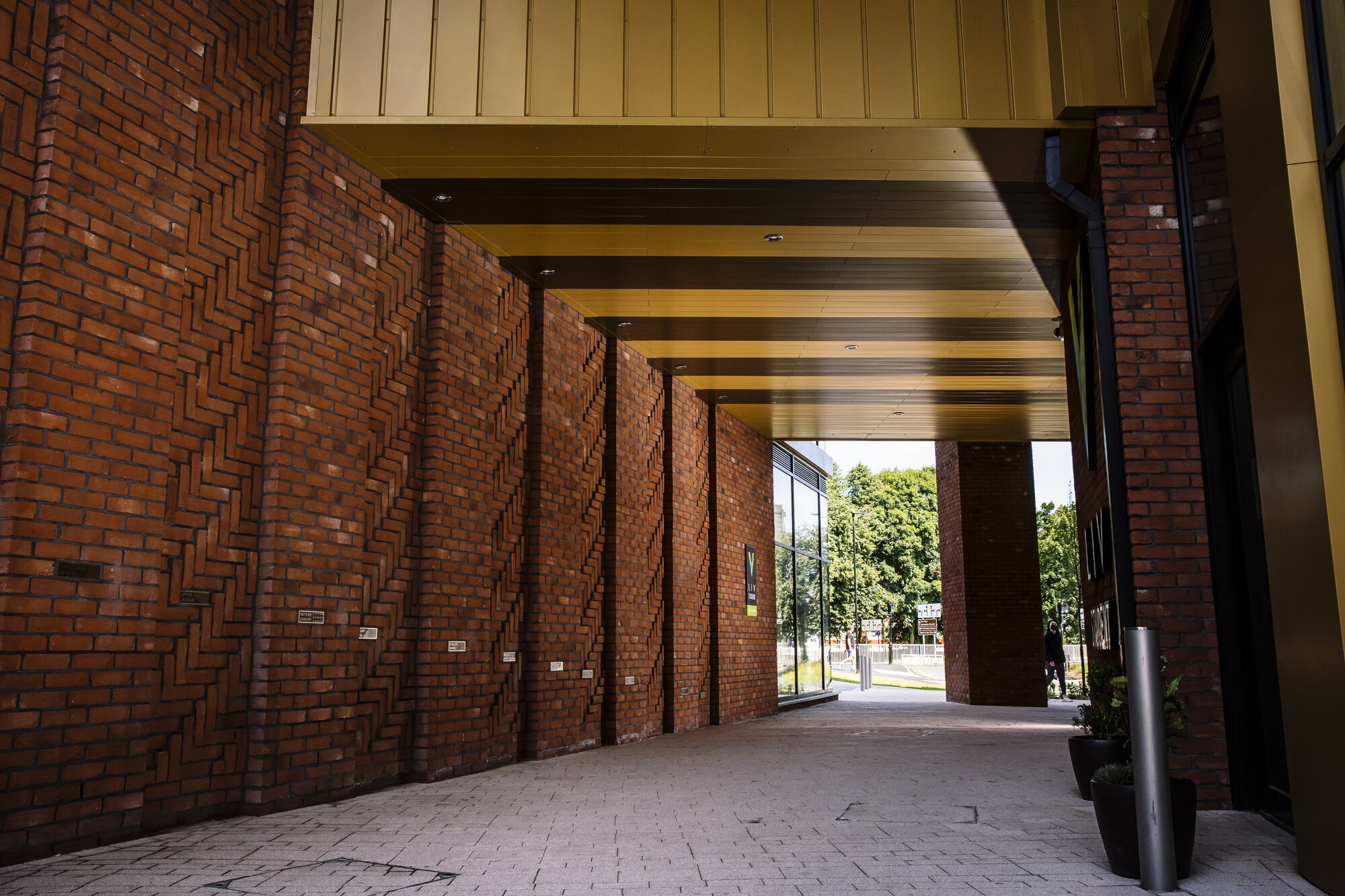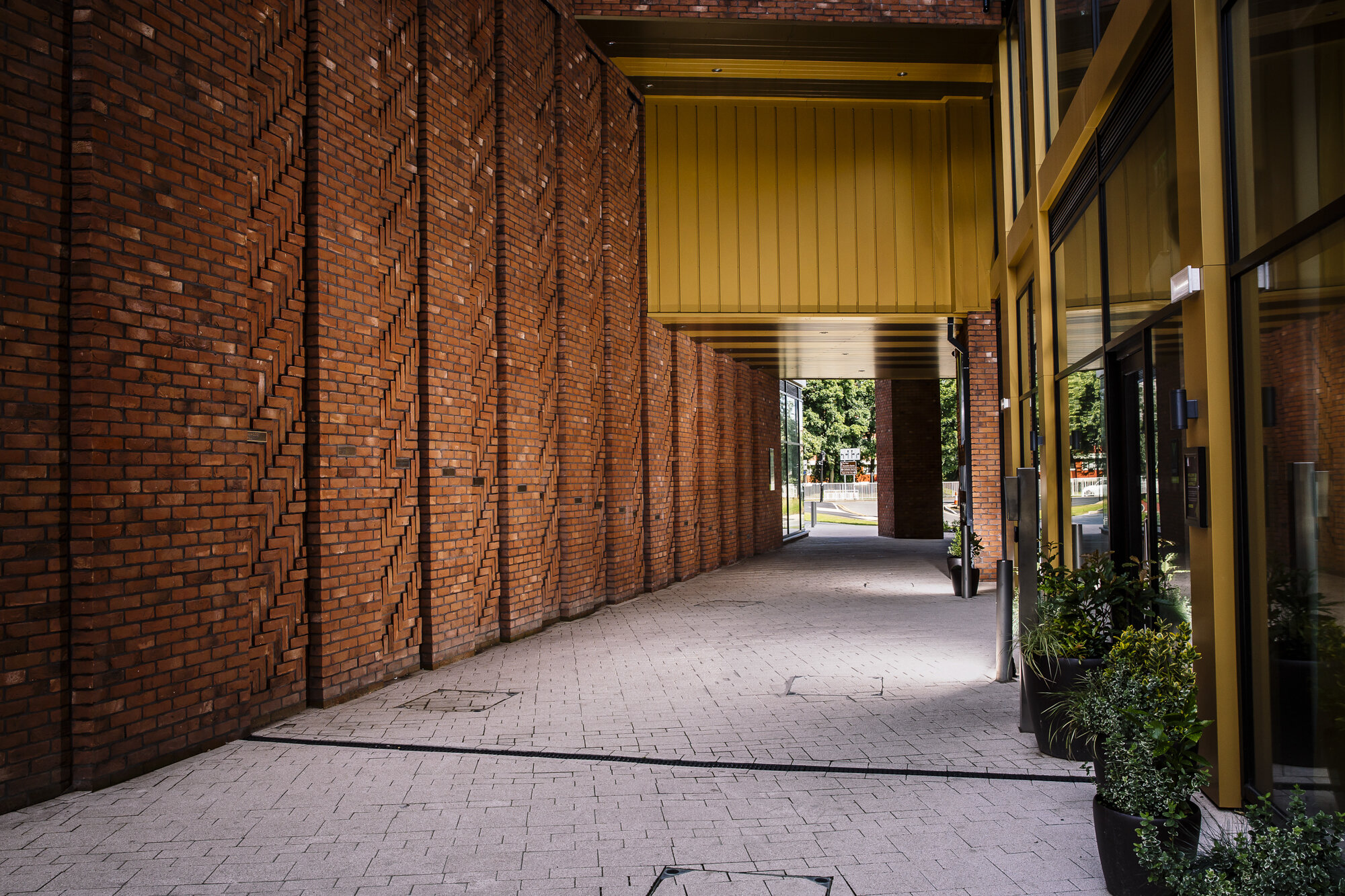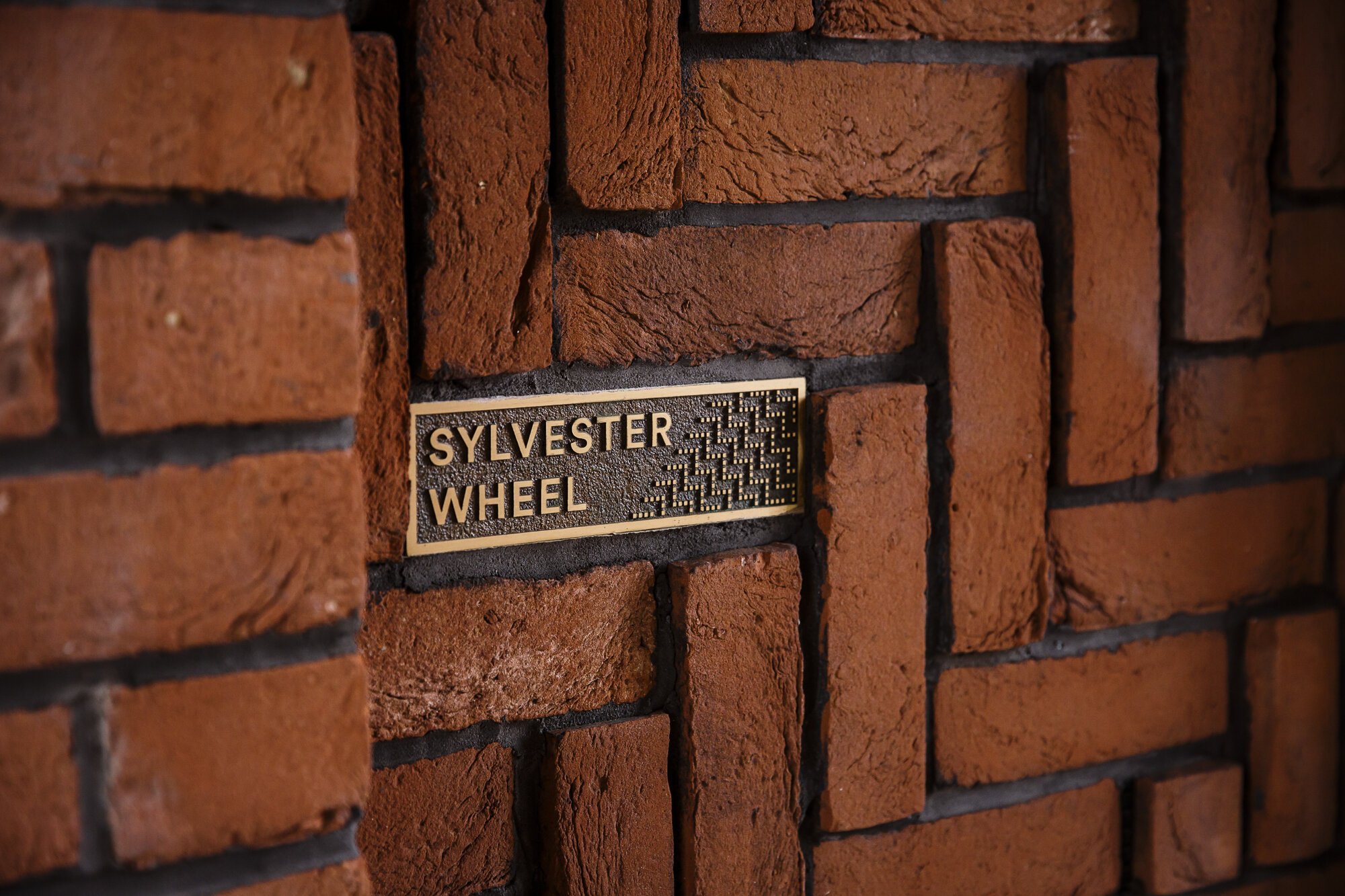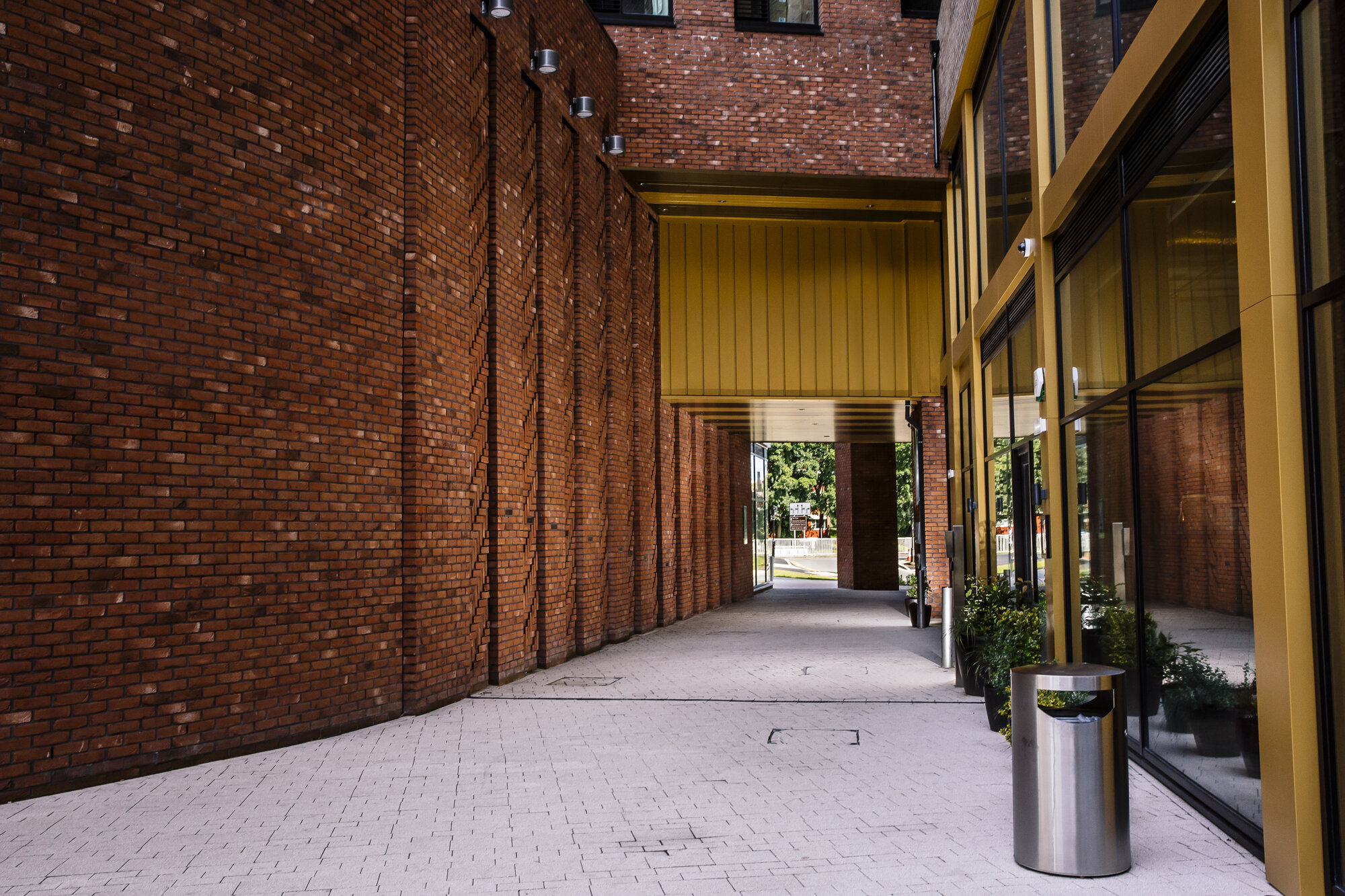Photos: James Mulkeen
Porter Brick, 2020
The Porter Brook is a river in the City of Sheffield, descending over 1,000 feet from its source on Burbage Moor, behind a small farm on Hangram. The river gets its name from its brownish hue, reminiscent of porter beer, a color caused by its passage over iron-ore deposits.
Like other Sheffield rivers, the Porter Brook was ideally suited for water power. This enabled dams to be built close together, with the outflow from one mill not restricting the next downstream. By 1740, Sheffield had become the largest user of water power in Britain, and likely in Europe. In the Porter Valley alone, 21 mill dams powered 19 waterwheels, primarily used for grinding corn, operating forge hammers, rolling mills, and sharpening knives and blades—the industries that made Sheffield famous.
The design takes inspiration from the nearby Porter Brook and aligns with Sheffield City Council’s master plan to create a continuous, walkable riverside path from Sheffield Train Station to Hunters Bar. Although the river flows underground at the back of the development, hidden from view, the work serves as a reminder and celebration of the water’s proximity. It is intended to enhance the experience of moving through the undercroft, connecting the Ecclesall Road façade to the building’s student entrance, symbolically aiding the flow of people while honoring the river’s historical significance.
The architecture features corbeling techniques in the brickwork to suggest the flow of water. In addition to brick, the visual design extends into the soffit features, and unique bronze-cast bricks were added, each bearing the name of a mill or dam that once existed along the Porter Brook. Lighting further enhances the vertical pillars during evening hours, bringing the design to life.
This project was developed in collaboration with Axis Architecture (Sheffield).
Materials - Brick, Aluminium Soffit and Cast Bronze
